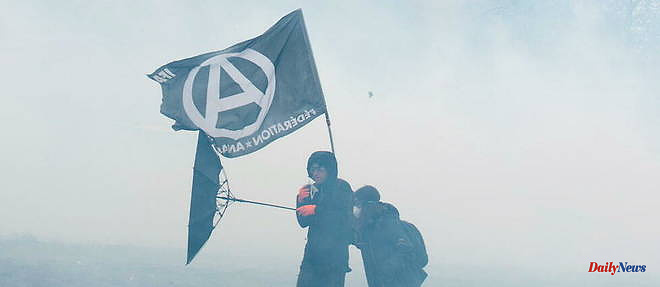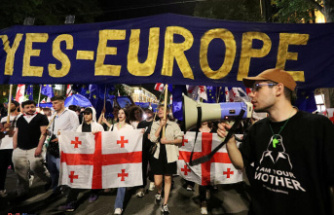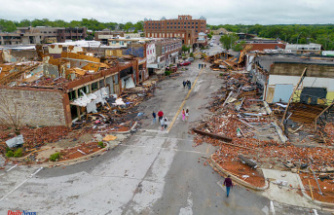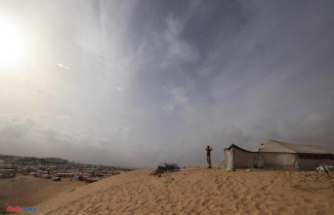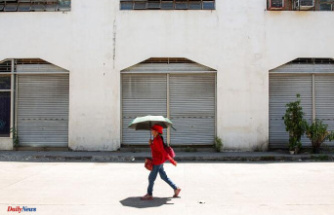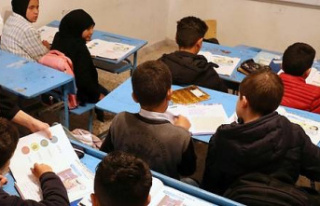Dozens of injured on both sides, several seriously. Here is the human toll of the demonstration against the "megabassin" of Sainte-Soline, in Deux-Sèvres, last weekend. A demonstration characterized by violent clashes between the gendarmes and certain radical environmental activists. For Le Point, Sébastien Leurquin, freelance journalist, co-author of The coming confrontation, from eco-resistance to eco-terrorism?, deciphers the phenomenon of radicalization of ecological militancy.
Le Point: The violent clashes in Sainte-Soline are an illustration of what you describe in your book. So it was all predicted...
On the other side, the peaceful environmental activists have been completely overtaken by the violent radical activists. We knew, however, that the Uprisings of the Earth, one of the co-organizers of the demonstration, played an ambiguous and dangerous game by mobilizing for months ultra-left groups, whose modes of action we know.
Precisely, the Minister of the Interior, Gérald Darmanin, wishes to dissolve Les Uprisings of the earth, an environmental movement which he suspects of being at the origin of the clashes with the police. Can this will succeed?
The so-called "separatism" law, which is supposed to "confirm the principles of the Republic", gives the public authorities the tools to dissolve any radical environmental movements. However, the reality is more complex. There have been attempts to dissolve ultra-left organizations, but the Council of State has not validated them all. This is particularly the case with that of the Antifascist Group Lyon and surroundings, in May 2022: it was too difficult to prove that this group directly called for violence. And that will certainly be the case with The Uprisings of the Earth: they certainly surround themselves with black blocs, but do not directly promote violence in their communication.
How do you explain that this bedpan story crystallizes so many passions?
The issue of water is crucial because climate change is making this resource increasingly scarce. There is also a frontal opposition between two visions of the world. The public authorities defend an "industrial" agricultural model, in favor of economic growth. The "mega basins" are intended to store water drawn from groundwater in winter. This water will then be used to water the surrounding fields in the summer. But environmental activists believe that these bedpans are a "mal-adaptation" to climate change. Conversely, they advocate a model based on peasant agriculture and economic decline.
Should we fear other violent demonstrations of this type?
Yes I think. Gérald Darmanin's desire to dissolve Les Uprisings of the Earth is a sign that the State fears other confrontations. Moreover, according to this organization, Sainte-Soline was only "episode 1 of season 5" of the Uprisings of the earth. We can expect an "episode 2", in April, against the Toulouse-Castres motorway link project. Perhaps an "episode 3", in May, against the Rouen motorway bypass. And so on... A whole calendar of actions is planned to fight, everywhere in France, against the projects that the militants consider "ecocidal".
Can we imagine an alliance of radical environmental movements?
This is already somewhat the case with The Uprisings of the Earth. This movement was created by former zadists from Notre-Dame-des-Landes, traditional environmental activists and anti-capitalist activists. This heterogeneous ensemble is the image of a basic movement. We observe a radicalization of some environmental activists and a greening of radical activists: the ultra-lefts organized in black blocs take advantage of the climate cause to exist.
Moreover, the evolution of this radicalization is very rapid. In 2018, the arrival of Extinction Rebellion in France was presented as the pinnacle of radicalism. In 2023, this movement is largely exceeded by a multitude of subgroups that we have mapped in our book…
How did we go from baba cool to black bloc?
Corinne Lepage, former Minister of the Environment (1995-1997) under Chirac, and whom we interviewed for our book, points to the responsibility of the political world. She says, "The government indicates one direction by forcing its way in the other." She adds, "It has the effect of driving people crazy." It is true that Emmanuel Macron has multiplied the media stunts, from his famous slogan "Make our planet great again" to the Citizen's Climate Convention. However, all this is very little followed by effects and the State has been condemned for climate inaction.
At the same time, the climate emergency is more significant than ever and activists lament that the system is not deviating from its trajectory. This is why they are carrying out radical actions to force it, precisely, to begin a real shift.
In his essay Democracy in America, Alexis de Tocqueville explains that any residual distance that separates us from real equality becomes more unbearable as inequalities are reduced. Is it the same with ecology – the more action you take, the more climate actions are seen as unbearable?
More and more measures are being taken, but are they all up to the challenge? Activists would say no. This is why some groups, such as the Uprisings of the Earth, aspire to create an "ecosocial" front. They consider that social and climatic inequalities are linked. This is, for example, the position of Last Renovation, a group which campaigns for the thermal renovation of buildings. Its activists explain that thermal sieves, responsible for a good part of greenhouse gas emissions, are most often inhabited by modest citizens. For them, fighting against inequalities therefore has a real ecological and social dimension.

